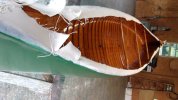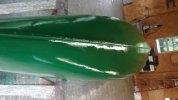pasteljoe
Curious about Wooden Canoes
Hello Etienne,Joe,
I prepare my own shellac with glitters and alcool for artists. Can’t be easier. It is very useful for preparing wood, usually as a hardener, before finishing with wax or varnish.
You can buy some glitters from most cabinetmaking suppliers like Laverdure in Paris. I think I bought my last lot of glitters at Colorare in Tours, but they don’t offer them on their website. Pretty sure they have some in their shop though !
Have fun ! Étienne
could you tell me what is the proportions of shellac and alcohol do you use please ? thanks !



